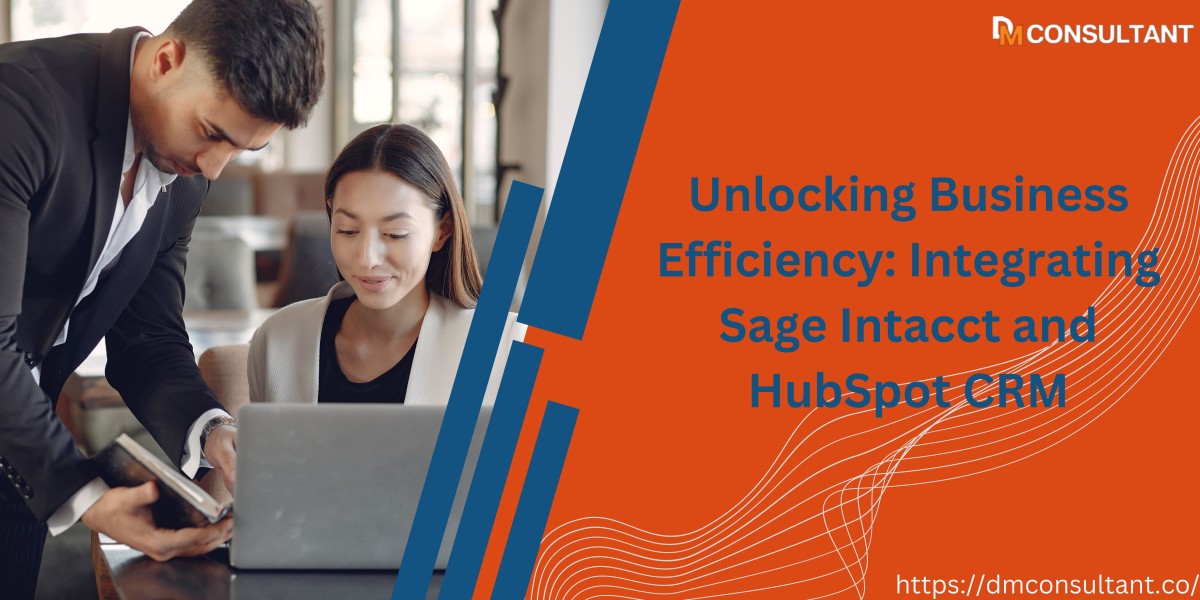In today’s fast-paced business environment, efficiency and streamlined operations are essential for staying competitive. Integrating your Customer Relationship Management (CRM) system with your financial management software can significantly enhance your business processes. One powerful integration is between Sage Intacct, a leading cloud-based financial management solution, and HubSpot CRM, a comprehensive platform for inbound marketing, sales, and customer service. This blog will explore the benefits and steps involved in integrate Sage Intacct with HubSpot CRM.
Why Integrate Sage Intacct with HubSpot CRM?
1. Unified Data Management: Integrating Sage Intacct with HubSpot CRM ensures that your customer data is synchronized across both platforms. This unification eliminates data silos, providing a single source of truth for customer and financial data.
2. Enhanced Efficiency: By automating data entry and synchronization, your teams can save significant time and reduce errors. This integration allows sales and finance teams to focus on strategic tasks instead of manual data management.
3. Improved Financial Insights: With seamless data flow between HubSpot CRM and Sage Intacct, you gain real-time financial insights related to customer transactions, revenue, and sales performance. This visibility helps in making informed business decisions.
4. Streamlined Quote-to-Cash Process: The integration facilitates a smooth transition from sales quotes in HubSpot CRM to financial transactions in Sage Intacct. This streamlines the entire quote-to-cash process, improving cash flow management and customer satisfaction.
5. Scalability: As your business grows, the integration between HubSpot CRM and Sage Intacct can scale with you, accommodating an increasing volume of transactions and customer data without compromising performance.
Steps to Integrate Sage Intacct with HubSpot CRM
1. Evaluate Integration Needs:
Before proceeding with the integration, assess your business needs and objectives. Identify the key data points you want to synchronize, such as customer information, sales orders, invoices, and payment status. Understanding your requirements will help in configuring the integration effectively.
2. Choose the Right Integration Tool:
Several third-party tools and platforms offer integration services between Sage Intacct and HubSpot CRM. Popular choices include Workato, Zapier, and Integromat. Evaluate these tools based on their features, ease of use, and support for the specific data points you want to synchronize.
3. Set Up API Access:
Both Sage Intacct and HubSpot CRM provide APIs (Application Programming Interfaces) that facilitate data exchange. You'll need to generate API keys and configure permissions to enable secure communication between the two platforms.
4. Configure Data Mapping:
Define how data fields in HubSpot CRM correspond to fields in Sage Intacct. This step is crucial for ensuring accurate data synchronization. For example, map customer names, contact information, and sales orders in HubSpot to the corresponding records in Sage Intacct.
5. Test the Integration:
Before going live, thoroughly test the integration to ensure data is being transferred accurately and in real time. Conduct end-to-end tests, including creating a new customer in HubSpot and verifying that the information appears correctly in Sage Intacct.
6. Monitor and Optimize:
After the integration is live, continuously monitor its performance to identify any issues or discrepancies. Regularly review the integration settings and make adjustments as needed to optimize data synchronization and workflow efficiency.
Best Practices for Successful Integration
· Data Cleansing: Ensure your existing data in both Sage Intacct and HubSpot CRM is clean and accurate before integrating. This minimizes the risk of synchronizing incorrect or duplicate data.
· User Training: Train your sales and finance teams on how to use the integrated system effectively. Provide guidelines on how to handle data entry, synchronization issues, and best practices for maintaining data integrity.
· Security Measures: Implement robust security measures to protect sensitive financial and customer data. Ensure that API keys are stored securely and access permissions are configured correctly.
· Regular Updates: Keep both Sage Intacct HubSpot Integration CRM updated to the latest versions. This ensures compatibility with the integration tool and access to the latest features and security enhancements.
Conclusion
Integrating Sage Intacct and HubSpot CRM is a strategic move that can significantly enhance your business efficiency by unifying data management, improving financial insights, and streamlining processes. By following the steps outlined above and adhering to best practices, you can achieve a seamless integration that supports your business growth and operational excellence. Embrace the power of integration and unlock the full potential of your financial and customer relationship management systems.







